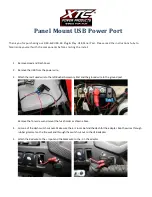
44
TESTS OF THE WHITE STEAM PLANT
Prof. C. H. Benjamin, of the Case School of Applied Science, Cleveland, Ohio, made a very careful brake test of the
steam plant of the White system of 1903 which used a 10 HP engine and found that when the engine was fully loaded
it used only 12.6 lb. of steam per brake HP hour and 1.16 lb. of gasoline per H. P. hour. These results are
unprecedented for small steam plants of any size and are nearly equal to the best results obtained with large triple
expansion condensing engines. Some details and results of this test are given as an Appendix.
22
I conducted a test of the boiler and engine for the 1907 car from July 9 to 17, 1906, being assisted by Mr,
Walter Grothe, M. E., engineer for the White Sewing Machine Co., Prof. W. N. Barnard, M. E., of Conell University,
Mr. Wm. Scaife, and Mr. George Carpenter, M. E.
23
The engine and boiler tested have essentially the same features of design as those previously used, but are
somewhat larger and have increased power. The engine used in the White steam cars of 1905 and 1906 had cylinders
3 and 5 inches in diameter by 3
½
inches stroke, and was rated at 18 H. P. The one tested had cylinders 3 and 6 inches
diameter by 4
½
inches stroke, and is rated by the company at 30 H. P.
24
Dimensions of Engine for 1907 car:
Diameter of cylinders, 3" high pressure, 6" low pressure.
Diameter of piston rods, 9/l6" low.
Clearance of engine, 17.9" high, 9/16" low
.
Weight of cylinder castings with guides, 98.5 lb.
Weight of valves and fittings, 28.0 lb.
Total weight, engine complete, 328 lb.
23
Boiler: The boiler consists of nine coils of drawn tubing with a nominal internal diameter of
½
inch, actual
internal
diameter of 0.53 inch, actual external diameter 0.72 inch, The external diameter of the boiler is 22 inches; its
height, 11 inches. The boiler contains 243 feet in length of
½
inch tubing, and has a heating surface, which is
calculated, as amounting to about 45.8 sq.
26
The weight of the boiler without fittings is 150 lb. The weight of casing, bolts, and all the fittings is 125 lb.
additional, the total weight of the boiler complete as 275 lb. The weight of the burner is 40 lb. From this it is noted
that the total weight of the power system is about 643 lb. The maximum brake horse power as shown on the test, is a
bout 45, hence the weight is about 14.3 lb. per D. H. P.
THE FUEL
51
The fuel used in the test was gasoline supplied by the Standard 0il Company. Its specific gravity, as
measured by a Beaune hydrometer, reduced to a temperature of 60
0
F. was 68.5, which corresponds to a specific
gravity of 0.705 at 60
0
F. Its specific gravity as measured at a temperature of 75
0
was 0.6945, Water being 1. From
this measurement a gallon of gasoline at a temperature of 60
0
should weigh 5.877 lb.
52
The heating value of this oil as determined by Prof. H. Diedrichs, as the average of three determinations,
with the Junker calorimeter, is 19,606 B. T. U. per pound for the higher value uncorrected for water vapor. The
chemical analysis of the oil, as made by Prof. B. S. Cushman of Cornell University, showed 84.76 per cent C, 15.24
per cent H, from which the heating value per pound, by calculation, is 20,400 B. T. U. The lower calorimetric value is
about 10% below the theoretical calculated value, a discrepancy which I am not prepared to explain at the present
time, but which I judge from consultation of a few authorities has occurred a number of times before, I consider the
lower calorimetric value as more nearly representing the value of the fuel in practice than the other.




































